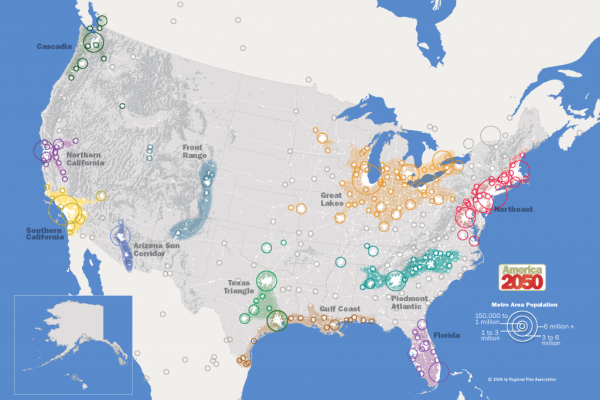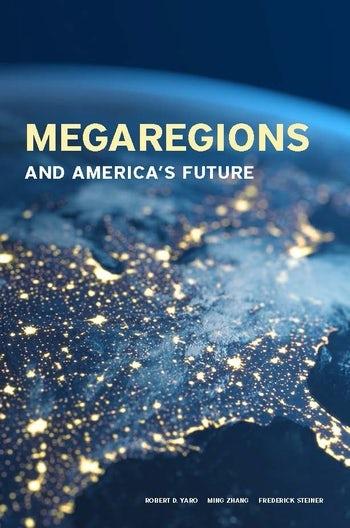CM2 Researchers Launch New Book Exploring Megaregions

Megaregions can help the United States contend with its mega-challenges. Also known as “super-city regions” or “city cluster regions” in the European and Asian contexts, the term “megaregion” is used to describe a network or cluster of metropolitan areas that have specific relationships or ties to one another. The Texas Triangle—which connects Dallas-Fort Worth, Houston, San Antonio, and the Austin metropolitan areas—is one of eleven megaregions in the United States, and is among those with the fastest growth.
At The University of Texas at Austin School of Architecture, Community & Regional Planning Professor Ming Zhang has specialized in the study of transportation planning at the megaregional scale as the Director of the University Transportation Center (UTC) Cooperative Mobility for Competitive Megaregions (CM2). Supported by a six-year grant awarded by the U.S. Department of Transportation in December 2016, the CM2 consortium includes partners at The University of Texas at Austin, Louisiana State University, Texas Southern University, and the University of Pennsylvania.
Over the past six years, Zhang and the CM2 team have sought to advance research, education, and technology transfer initiatives to improve the mobility of people and goods through megaregions. Each year, CM2 publishes on average over fifty papers, presentations, and reports to advance the conversation about transportation needs in some of the nation’s most populous centers. CM2 hosts lectures, forums, exhibitions, and other events to engage stakeholders in our research.
This semester, a new book titled Megaregions and America’s Future co-authored by consortium partners and published by the Lincoln Institute of Land Policy and Columbia University Press aims to encapsulate the center’s work by offering a look at the history of the megaregion as a concept as well as a menu of policy options for how to take advantage of it. Co-authors include CM2 Director Ming Zhang, Robert D. Yaro, professor of practice emeritus in city and regional planning at the University of Pennsylvania, and Frederick R. Steiner, dean and Paley Professor of the Stuart Weitzman School of Design at the University of Pennsylvania and the former dean of the UT School of Architecture. As conveyed in the abstract of the book:
Megaregions can help the United States contend with its mega-challenges. With shared economies, natural resource systems, infrastructure, history, and culture, these linked networks of metropolitan areas and their hinterlands—such as the Southwestern Sun Corridor or Great Lakes—can strengthen climate resilience, natural resource management, economic competitiveness, and equity at the local, regional, and national levels in the United States. This sourcebook provides updated demographic, economic, and environmental information on U.S. megaregions for urban and regional planners, policymakers, academics, and decision-makers in transportation, environmental protection, and development agencies. The book reviews the origins of the megaregion concept and the economic, ecological, demographic, and political dynamics. Readers will understand trends, processes, and innovative practices within and between megaregions and identify the most pressing challenges that demand strategic decisions and actions.
To celebrate the launch of the book, the University of Pennsylvania will host a book launch event on Thursday, March 17, 2022, at 6:00 p.m. ET (5:00 CT). The event will bring together the book’s co-authors for a closer look at the untapped potential of megaregions for planners, policymakers, academics, and decision-makers in transportation, environmental protection, and development agencies.
For more information and to register to attend the event, visit: https://www.design.upenn.edu/city-regional-planning/graduate/events/book-launch-megaregions-and-americas-future


